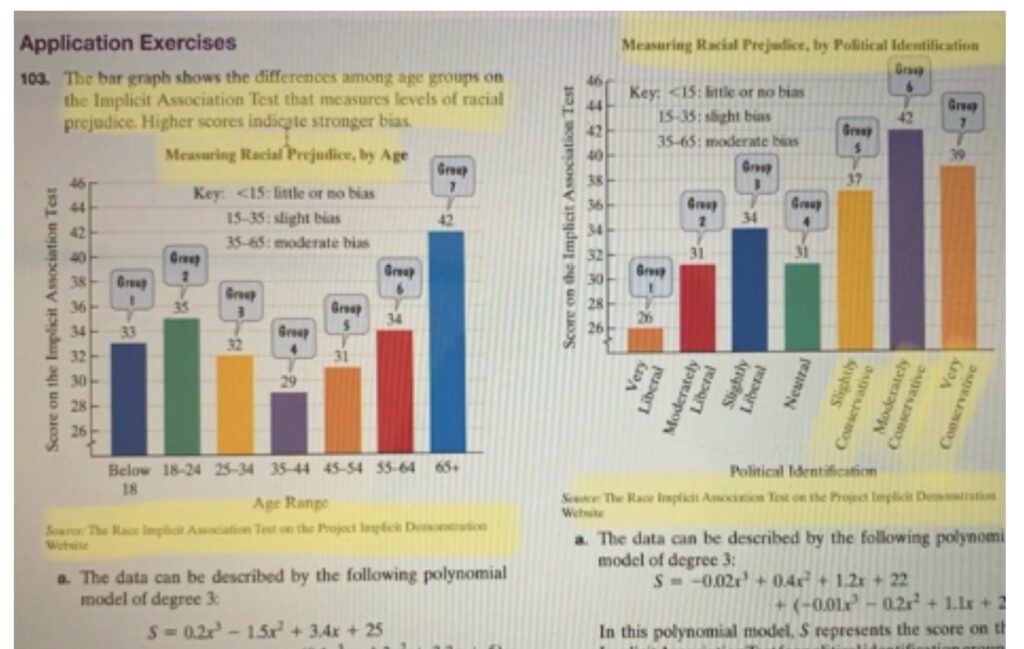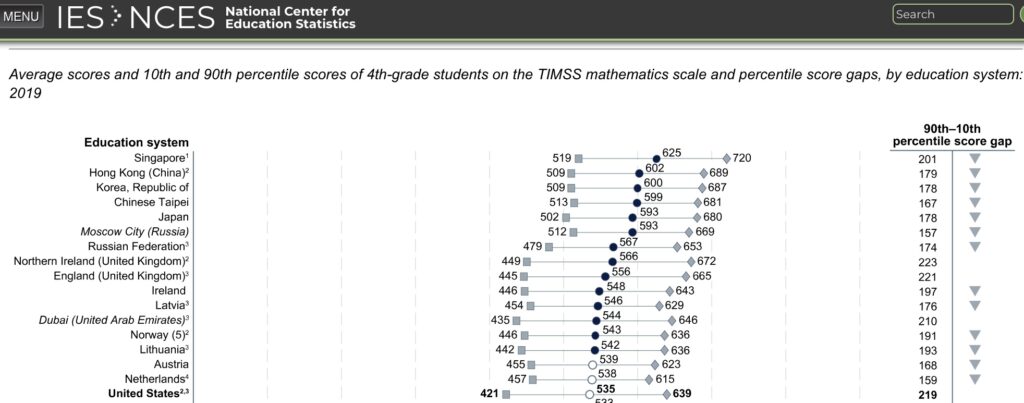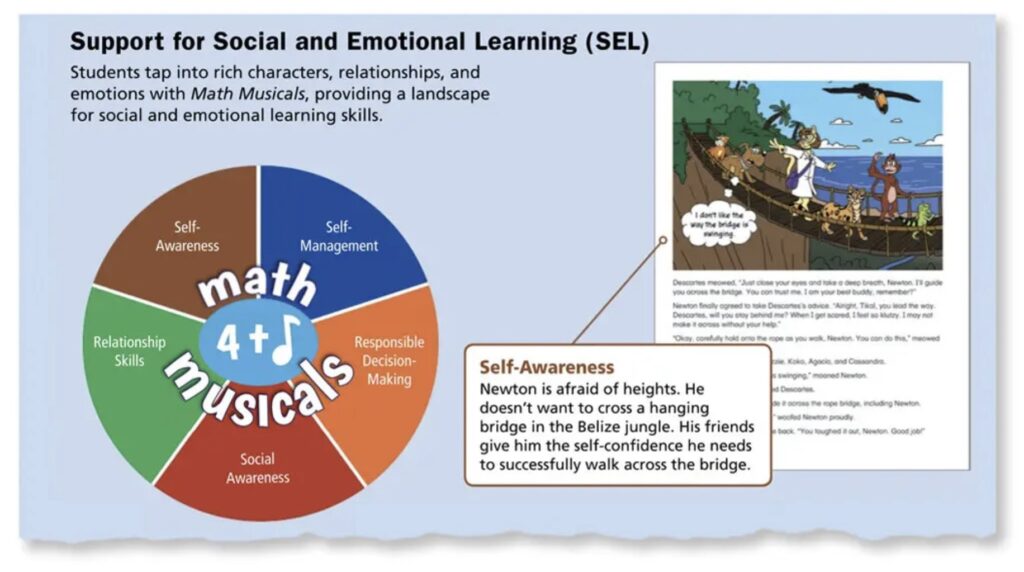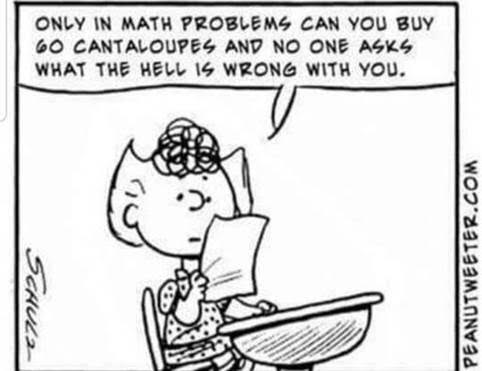You know the adage about not tearing down a wall until after you know why it was built?
Hearing about the latest Florida law, this one “banning” some math books, has me wondering.
What could be in math books that would be objectionable?

At the same time, I remembered that some of the Woke Generation claim math, itself, is racist. (Along with grammar, objectivity, master bedrooms, etc.).
Here are a couple of examples of stories claiming that math is racist:
https://www.wsj.com/articles/california-leftists-try-to-cancel-math-class-11621355858
You don’t have to agree with these ^^^ points of view. You just have to admit they exist.
With the Florida school book issue, everyone was talking about the “banned” books, but no one had an example of the objectionable language — until now, even if the examples are few, from The New York Times.
Before we can tear down the metaphoric wall, we have to know what it is made of — brick, or stone, or wood, or plastic.
Florida made a mistake by not offering examples of the offensive material. This suggests it doesn’t have a strong case, because if it did — it would present it. And the books aren’t being “banned.” The objectionable ones simply won’t be bought by the state of Florida. Massachusetts can still buy them, if it wishes.
The absence of solid examples from Florida opens the door to the Times doing its own case study. While I trust the reporters to be as fair as they are able, they are Times’ staffers and I know the Times staff to be overwhelmingly liberal. It linked to the four examples given by Florida. (The chart above is one.)
If you follow the Times link — and I hope you will — you will see the reporters present (at least) two points of view, and spell out what they found to be “objectionable” material in the books.
But first — math is math. It is factual and predictable. 2+2=4 no matter your race, age, religion, gender, nationality or NFL team you root for.
The fundamentals don’t change. They are immutable.
In my memory, I was taught that if Farmer Gray has 10 chickens and they each lay one egg each day, that means in a week, the farmer has 70 eggs.
If one chicken dies, the next week he collects 63 eggs.
I did not have to write a “math biography” — which I would have loved to do because I could write better than I could compute.
Today, kids may be asked to write a “math biography” so that teachers, the Times explains, can help identify kids who need help.
In my day, the teachers identified those kids by their inability to get 2+2=4 right. If they couldn’t do that, they needed help.
So simple. No psychology required.
Back in my day, U.S. students pretty much led the world in math scores. Now we trail Hong Kong, Singapore, South Korea, Latvia, Dubai, and Russia(!), among others.

I wonder if their schools are teaching SEL?
What’s that?
That is Social-Emotional Learning content, the Times explains, “a practice with roots in psychological research that tries to help students develop mind-sets that can support academic success.”
As meaningful as how many eggs Farmer Gray gets from his chickens, children should think about how the hens feel about having their eggs stolen.
That’s a joke — but maybe not that much of an exaggeration.
One book had a chart showing five core skills students should develop. Here they are:

What in the blue blazes does “self-awareness” and “relationship skills” have to do with 2+2=4?
I am not saying it has no place in schools. I am saying it can be taught in mental health, or in comportment (remember that?) or social science.
Here’s the problem: Since 2+2=4 never changes, the publishers have to find something new so that they can sell new math texts to school districts. Since the math doesn’t change, publishers change the narrative.
Some of it is OK. It was Farmer Gray when I was in school, representing an overwhelmingly white, patriarchal society.
So now it might be Farmer Grace, or Farmer Kahlil.
No problem.
But when one math book, as reported by the Times, provides mini bios of mathematicians, and not a single one is a white male, haven’t we overcorrected, just a bit?
No, that’s not white fragility, it’s simple reason. Many of us say we want an “America that looks like us.”
Doesn’t that include white kids?

“Some educators worried that the field of social-emotional learning celebrated behaviors associated with white, middle-class, culture, and paid too little attention to the kind of grit it takes to grow up in poverty,” the Times reported.
If that’s true, the solution is simple. Drop the social indoctrination and return to 2+2=4.
Stu, in my day, back when the dinosaurs roamed, we learned multiplication tables by endlessly writing them until they were seared into our brains. 1X1=1, 1X2=2…12×12=144. Ask me what 11×11 is and without thinking I know it’s 121.
We never considered whether learning by rote was sexist, or reflected our white privilege. We just kept doing them until the slowest kid in our class got it. It’s been one of the most useful things I’ve ever learned in school.
Thanks. See my comment to Anthony.
Andrew, I too am a product an educational process that stressed rote/memorization. When it came to certain “tricky” computations like 11 x 11 = 121, I would mentally compute 11 x 10= 110 + 11 = 121. (quickly so that Sister Mary Whatever wouldn’t scold me).
I wonder now if I didn’t invent an early form of “new math”…
May be your best yet Mr. B. I will be sharing it.
Thank you and please do.
HAPPY WEDNESDAY !!!
pallie,
It’s a good thing that you write instead of ……whatever. You adapt very well, if not easily to the always present and changing need for clarification.
I must add to your theory – which is partially wrong, that 2+2 = 4 because…..
Any kid that went to catholic school ( probably Andrew ) that Sister Mary I’m gonna crush your head with my math book, is the true reason that 2+2 = 4 !
Tony
Learning ANYTHING is by rote, meaning you memorize it. For some reason, the educational geniuses have decided it is not sexy or exciting. It is not, but it WORKS.
You are correct, sir. The nuns spoon fed us every book – page by page. It was hard and intense. Just like the piece of desk that the one nun used to make her point. But we learned.
In reality. Those eight years of the IHM sisterhood, paved the way for us to do well in life.
I am unaware of the books used in Philadelphia for math improvement but based on the city statewide standing maybe they should explore some new approach. Philadelphia public schools have a score 23% versus the Pennsylvania average of 45%. The reading public school average in Philadelphia is at 45% versus the rest of the state at 62%. We can find many excuses and causes for the failure to raise the percentage but if you look at schools like Central, Masterman and Girls High that are among the top ranked public schools in Pennsylvania. Comparisons between Charter and Parochial schools against public school are unavailable due to different testing formulas. The growth of Charter schools in Philadelphia continues showing that parents support the ability to choose what is best for their children. On the other hand, 85% of students in the city are black and their daily routines differ in safety, unruly students, nutrition, parental involvement and the ability for the schools to remove disruptive students is difficult. I agree with you that the media and Politician’s express a position rather than a scientific study based on facts and research about the success of any of the books but rather the political condemnation of who made the decision instead of the actual effect on the curriculum. Florida scored 12th in math and 18th in reading out of the 50 states. A question for another day is they are 3rd in bullying in the country which raises the question is too much sunshine a stimulant for aggression.
Not too long ago I was buying a book, and while I was paying for it the electricity in the store went out. The young female cashier said she could not finish the sale because (as she said to me) “I don’t know what the tax is.” I told her, “The tax is 6%, so do it in your head.” She said, “I don’t know how to do percentages.” I asked her where she was attending school and what grade was she in. She told me she was a senior at Lower Merion High School (my alma mater). I expressed astonishment that she could have made it to 12th grade at a very good school and could not do a simple percentage. She simply said, “No one ever taught me.” Why worry about racism in math when, too often, our young people are too ignorant to know 2+2 = 4?
I was only able to open the first link, the NYT article. The next two required me to subscribe to their publications & I have a firm rule that zero percent of my assets will go towards MSM in any form. The “apparently biased” math expression representing this would be: C x $A = $S, where C = a constant representing the percentage of my assets I would be willing to pay, A = my assets and S = the resulting amount I’m willing to pay to MSM. Students, solve the equation when C = 0.
In reviewing the NYT article it appears the algorithm & theorem themselves are not biased- ie, the math is solid. Only the “labels” applied as a naming convention are biased. Really?
Being born in the 2nd term of the Eisenhower administration, I was subject to “biased” ways of learning math (and everything else, apparently) which put me on a path to earning a B.S. in Engineering later in life and a successful career as a result. I began observing AFTER the calculator was introduced to society a segment of our citizens suddenly couldn’t calculate simple arithmetic such as Mr. Benedict describes above. This surely must be early evidence that bias exists in math, too. NOT! It simply reveals that the OG teaching/learning methods produced outstanding results & the “unbiased” approach of today’s society lands us pretty well down the list as your TIMSS Scale Graph suggests.
This has become a tiring subject but I think we might be just getting started. Thank you for another great article!